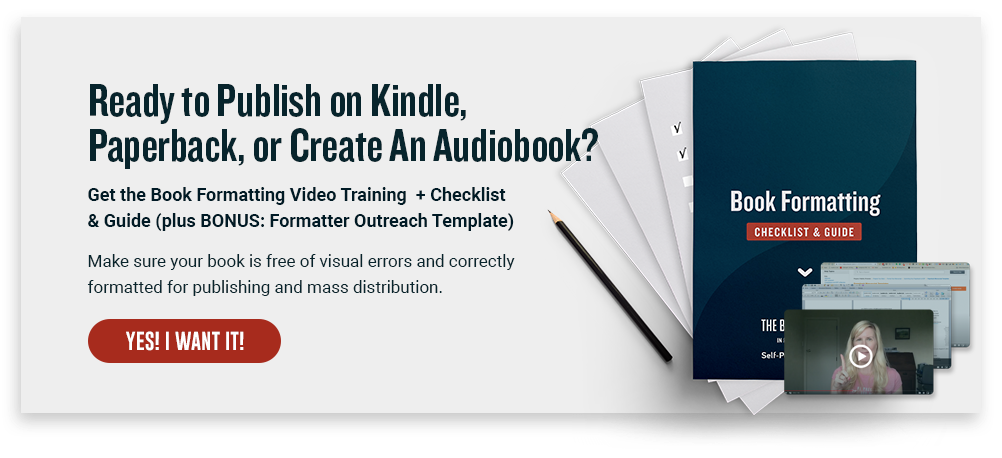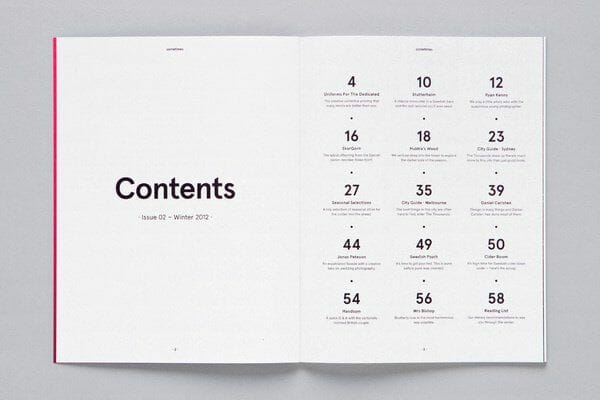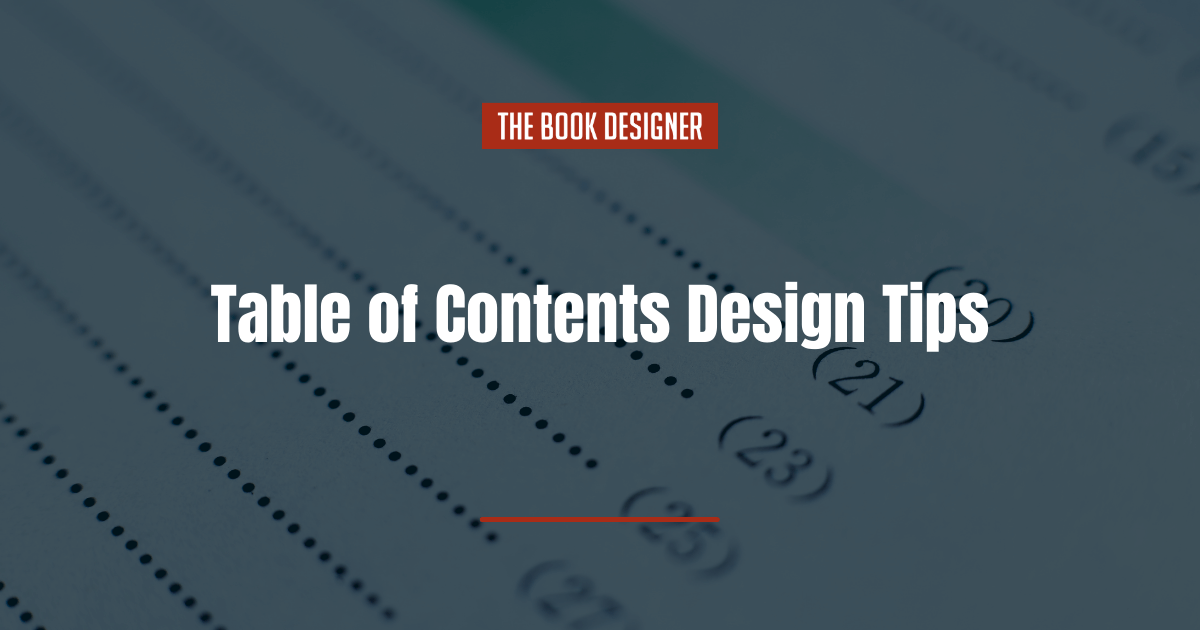Perhaps not as flashy as the cover or illustration, the table of contents (TOC) is the silent guide, the unsung hero leading readers on their journey through your tome. Located right at the front, before the story unravels, it serves as the roadmap to your narrative’s every twist and turn.
And while its purpose is undeniably practical—pointing readers to where they can find each morsel of information—it shouldn’t just be about function. Just like the introduction to your story, shouldn’t the table of contents design also inspire, captivate, and set the tone?
So, it’s time to shed the old beliefs and give our trusty table of contents its due. Let’s delve into how we can turn this page from merely functional to a visually compelling gateway to your story. Here’s what we’ll cover:
What’s the Role of a Table of Contents? Unveiling its SuperPower
Consider the table of contents as the book’s personal GPS, a beacon in the midst of dense pages and a potentially overwhelming amount of information. It’s not just about telling readers where they are—it’s also about illuminating where they could go.

The Table of Contents Serves Two Main Purposes
1. Offering Insight: It provides readers with a snapshot of the book’s landscape. It’s akin to a movie trailer, hinting at the richness of the content without giving everything away.
2. Facilitating Exploration: Readers, especially in non-fiction works, often hunt for specific sections or chapters that pique their interest. The table of contents is their shortcut, sparing them from aimlessly skimming it all.
Imagine plucking a hefty 600-page tome from a library shelf. Without a table of contents, where would you begin? How would you navigate? It’s the clarity and ease that a TOC provides that encourages readers to dive into the book’s depths rather than setting it aside.

Crafting the Perfect Table of Contents Design
It’s key that your table of contents design is following the function of the pages. Remember, it’s there to provide an organized list of the book or document’s chapters, sections, or parts in the order they occur.
The TOC acts as a roadmap for your readers, allowing them to navigate your work effortlessly. This fundamental function should be the cornerstone upon which the design of the TOC is built.
Here’s a few factors to check off your list as you get designing:
1. Clarity is Key
The TOC should be crystal clear and easy to read. This means using a simple and legible font, clear headings and subheadings, and a logical order of content. Anything that distracts from the immediate comprehension of the content listed should be avoided.
2. Consistency Matters
The design of the TOC should be consistent with the overall design of the document. The font, color schemes, and formatting should be harmonious with the rest of the work. This helps in creating a cohesive look and feel throughout the book.
3. Hierarchical Structure
The TOC should clearly indicate the hierarchical structure of the document. Main sections, chapters, or parts should be easily distinguishable from sub-sections or sub-chapters. This can be achieved by using different font sizes, styles (bold, italics), or indentations.
4. Page Numbers
Clearly indicating the page numbers where each section or chapter starts is crucial. This allows readers to quickly locate the section they are interested in.
5. Space it Out
Avoid cramming too much information into the TOC. Adequate spacing between lines and entries makes it easier for the reader’s eye to follow along.
6. Visual Aids
While not always necessary, visual aids such as icons or images can sometimes enhance the table of contents design by providing additional cues about the content. However, these should be used sparingly and should not overwhelm the text.
Remember, the design of the TOC should serve its function, not overshadow it. A well-designed TOC sets the tone for the rest of the document and helps the reader navigate your work with ease.
Elements of Your Table of Contents Design
When it comes to designing the ultimate table of contents, there are four main elements that come into play: photos, text, graphics, and white space.
1. Photos: It’s not just about picking the right snapshot—it’s about fine-tuning its presence. The right photo, edited and placed perfectly, sets the mood and complements your book’s essence.
2. Text: Typography is your book’s voice. Its style, weight, and arrangement can sing a melody that’s soothing to the eyes, making your content more inviting and cohesive.
3. Graphics: Beyond just pictures, graphics add a layer of depth. Whether it’s subtle lines or ornate icons, they should always walk hand-in-hand with the text, enhancing and not overshadowing.
4. White Space: (Also called negative space.) Think of this as the pause in a piece of music, giving readers a moment to breathe. It’s not empty; it’s potential space, guiding the reader’s eyes and emphasizing what truly matters.
5. Hyperlinks: For any digital or eBook editions, you’ll want to enable hyperlinks that can easily take your reader to the chapter title that they’re interested in. The last thing a reader wants is to have to scroll through the entire book!

Takeaways
Designing an effective Table of Contents (TOC) is crucial for the readability and overall success of your book. It’s not just about listing the chapters and sections; it’s about creating a visual hierarchy, enhancing readability, and setting the tone for the entire book.
One key design tip is to play around with font sizes—making chapter titles larger and more enticing, creating a clear contrast between main sections and sub-sections, and ensuring the font size is consistent with the book’s style. Remember, the TOC is one of the first things your readers will see, so it’s important to make a strong first impression.
Designing a TOC can be challenging, but with these tips, you’ll be well on your way to creating an effective TOC and eventually publishing your book. If you need more assistance with your TOC design or any other design-related matters, don’t hesitate to get in touch with us. Our team of design experts is here to help you create a document that not only looks great but also serves its purpose effectively.
Happy designing!


